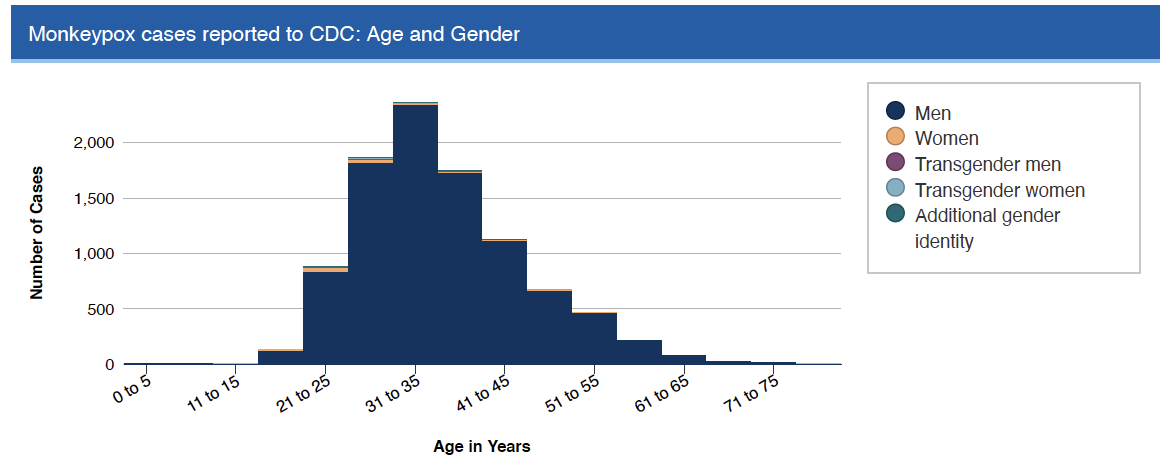
- As of August 29, 18,101 people in the U.S. have been diagnosed with MPV. With the first confirmed case in Wyoming, MPV has now been diagnosed in all 50 states, the District of Columbia and Puerto Rico. CDC reports that gay/bisexual men between ages 21 and 45 have the highest risk of getting MPV, with the largest number of cases among men ages 31-35.

- There is some good news nationally, as the number of new MPV cases has declined by roughly 25% over the last two weeks. Declines have been reported in some of the cities hit hardest by MPV, such as New York City and Chicago. CDC Director Rochelle Walensky said she was “cautiously optimistic,” although she noted that not all parts of the country are seeing progress. Georgia, for example, is experiencing a much higher rate of new MPV diagnoses than New York City. Globally, MPV cases declined by 21% last week, although cases are still rising in parts of the U.S. and in Latin America.
- There is also some very bad news, as trends show that the share of MPV diagnoses among Black people is increasing over time. People of color account for about two-thirds of the latest diagnoses. While Black people comprise about one-third of new MPV diagnoses, they make up only 15.6% of people who are receiving MPV treatment.

- According to CDC, one of the reasons we are seeing a decline in new MPV diagnoses is that some gay/bisexual men are taking steps to reduce their risk of getting MPV. However, evidence on gay men’s sexual behaviors during the MPV outbreak is primarily derived from reports by white gay/bisexual men, as Black and Latinx gay/bisexual men accounted for only 21% of participants in the study cited by CDC, even though together they represent nearly two-thirds of new MPV diagnoses.
- Another reason why new cases are falling in some places is that many gay/bisexual men have gotten vaccinated. As of last week, New York City alone had vaccinated more than 63,000 people. Vaccinating between layers of the skin, which requires less vaccine than under-the-skin vaccination, has contributed to vaccine uptake by stretching vaccine supply. (Available evidence indicates that between-the-skin vaccination generates offers protection against MPV that is comparable to under-the-skin vaccination.) A recent study found that 62% of MPV vaccine recipients experienced no side effects, with fatigue, muscle pain and headaches the most common side effects reported.